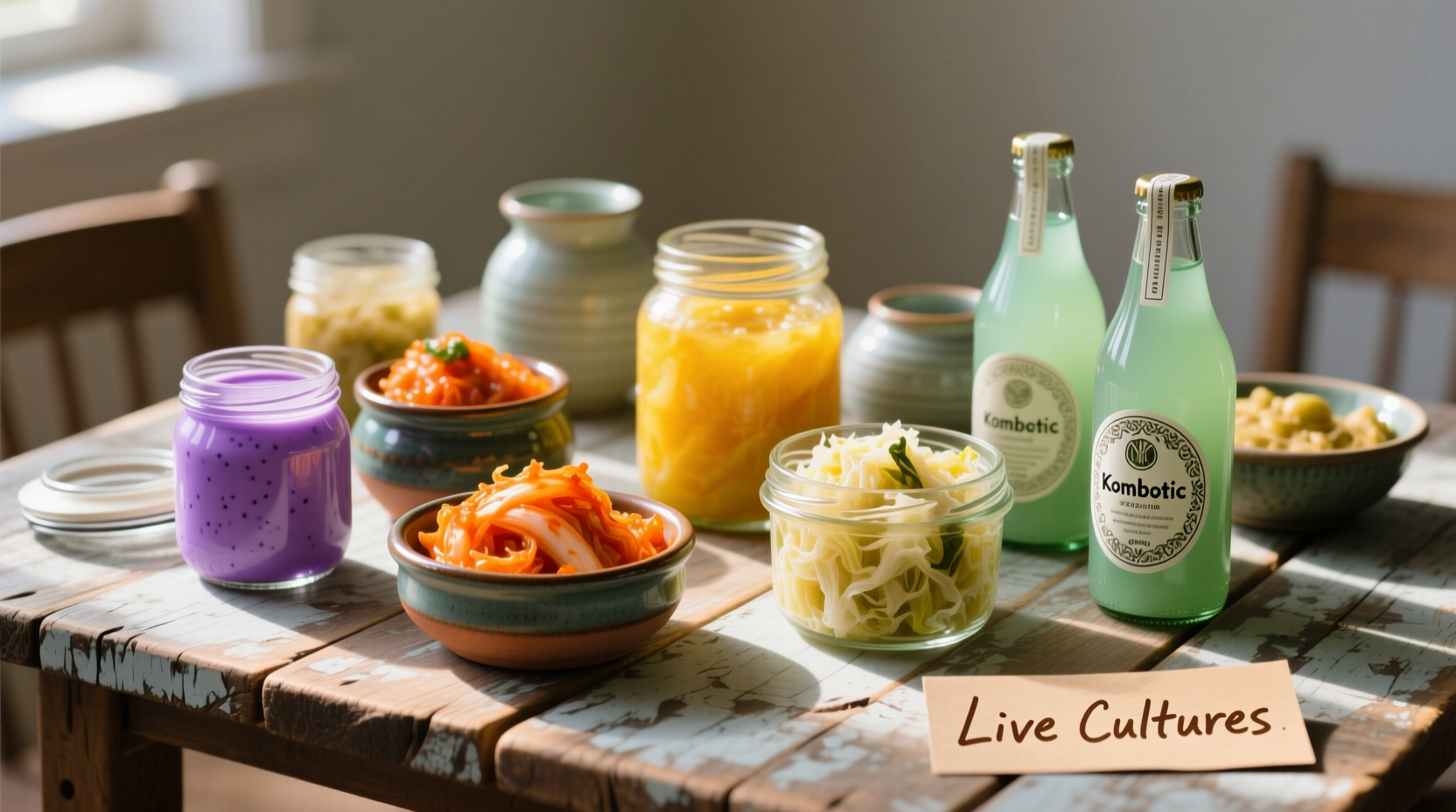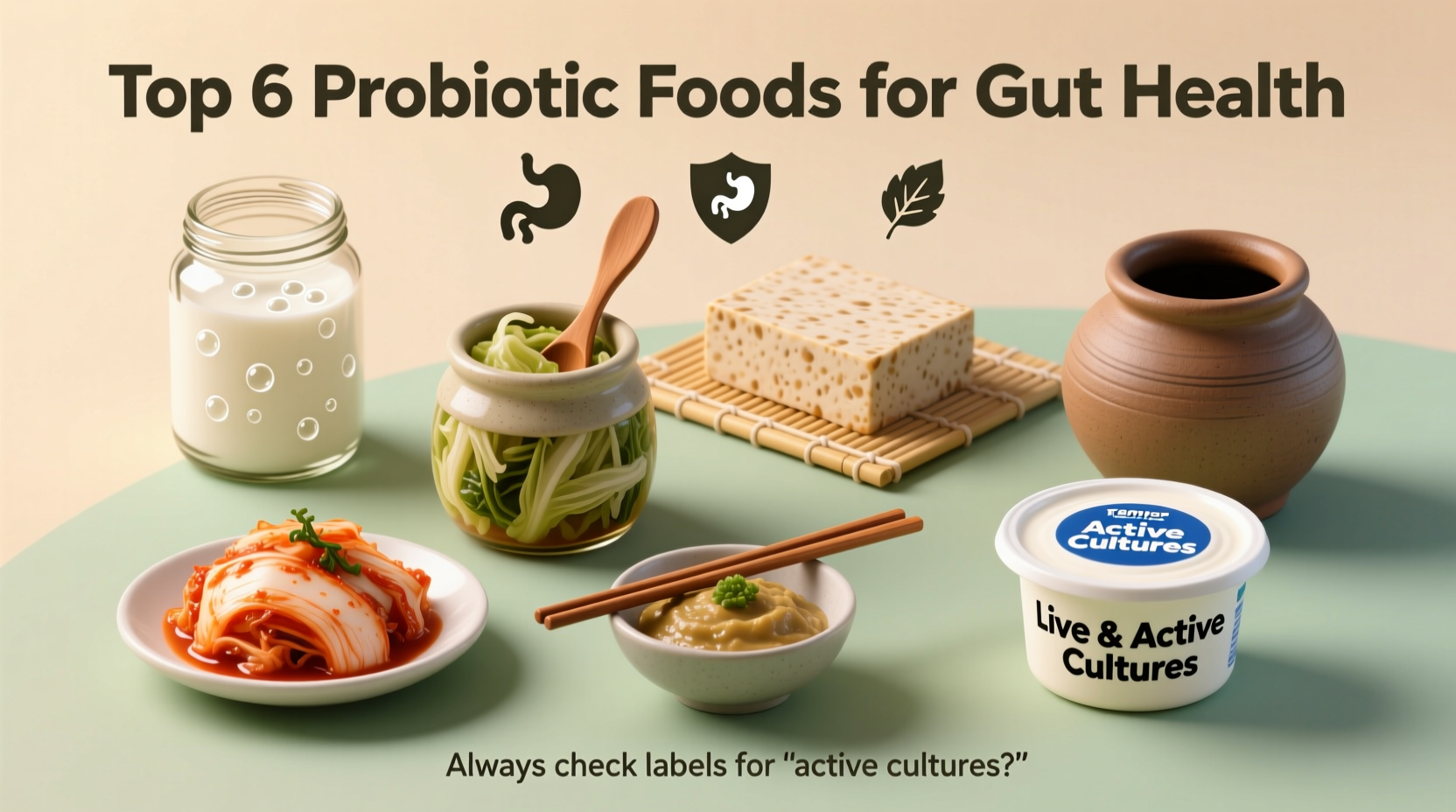The most effective natural probiotic foods include yogurt with live cultures, kefir, sauerkraut, kimchi, kombucha, miso, tempeh, and traditionally fermented pickles. These foods contain live beneficial bacteria that support gut health, with each offering unique strains and health benefits. For optimal results, choose unpasteurized, refrigerated varieties without added sugars.
Discover how these powerful fermented foods can transform your digestive health and overall wellness. Whether you're managing digestive issues, boosting immunity, or simply optimizing your diet, incorporating these probiotic-rich foods provides scientifically backed benefits without supplements.
Understanding Probiotics: More Than Just Gut Health
Probiotics are live microorganisms that, when consumed in adequate amounts, confer health benefits to the host. The World Health Organization defines them as “live microorganisms which when administered in adequate amounts confer a health benefit on the host.” Unlike supplements, food-based probiotics come with additional nutrients and enzymes that enhance their effectiveness.
Research published in Nature Reviews Gastroenterology & Hepatology confirms that diverse probiotic strains from various food sources work synergistically to improve gut barrier function, modulate immune responses, and even influence mental health through the gut-brain axis.
Top 8 Probiotic Foods Backed by Science
| Food | Key Strains | CFU per Serving | Special Benefits |
|---|---|---|---|
| Yogurt (with live cultures) | L. bulgaricus, S. thermophilus | 1-10 billion | Calcium absorption, lactose digestion |
| Kefir | 30+ strains including L. kefiri | 5-10 billion | Broad-spectrum benefits, antibiotic recovery |
| Sauerkraut (unpasteurized) | L. plantarum, Leuconostoc | 1-10 million | Vitamin C, K2, cancer-fighting compounds |
| Kimchi | L. sakei, Weissella | 100 million-1 billion | Antioxidants, anti-obesity effects |
| Kombucha | Various yeasts, Acetobacter | 100 million-1 billion | Detoxification, energy boost |
| Miso | A. oryzae, L. plantarum | 100 million-1 billion | Vitamin K2, cancer prevention |
| Tempeh | Rhizopus oligosporus | 100 million-1 billion | Complete protein, vitamin B12 |
| Traditional Pickles (brine-fermented) | L. plantarum, Pediococcus | 100 million-1 billion | Electrolytes, hydration support |
How to Choose Effective Probiotic Foods
Not all products labeled as probiotic actually deliver live beneficial bacteria. The National Institutes of Health emphasizes three critical factors when selecting probiotic foods:
- Live cultures verification - Check labels for “live and active cultures” or specific strain names
- Storage conditions - Refrigerated products typically contain more viable bacteria than shelf-stable options
- Absence of heat treatment - Pasteurization kills beneficial bacteria, so avoid “heat-treated” products
The USDA's Food Safety and Inspection Service notes that fermentation processes creating probiotics require specific temperature control and timeframes. Homemade fermented foods can be excellent sources but require proper technique to ensure safety and effectiveness.

Maximizing Probiotic Benefits Through Proper Consumption
Simply eating probiotic foods isn't enough—how you consume them matters significantly. Research from the International Scientific Association for Probiotics and Prebiotics reveals these evidence-based strategies:
- Pair with prebiotics - Consume probiotic foods with prebiotic fiber sources (bananas, onions, garlic) to feed beneficial bacteria
- Timing matters - Taking probiotics with food, particularly yogurt with meals, increases bacterial survival through the digestive tract
- Consistency is key - Daily consumption maintains healthy gut populations rather than occasional large doses
- Avoid extreme temperatures - Don't add probiotic foods to very hot dishes, which can kill beneficial bacteria
Important Considerations and Limitations
While probiotic foods offer numerous benefits, they're not appropriate for everyone. The Mayo Clinic identifies specific situations where caution is warranted:
- Individuals with compromised immune systems should consult physicians before consuming raw fermented foods
- People with histamine intolerance may experience reactions to fermented products
- Those with small intestinal bacterial overgrowth (SIBO) might need to limit certain probiotic foods
- Probiotic foods shouldn't replace medical treatment for serious digestive conditions
A 2023 review in the Journal of Gastroenterology and Hepatology notes that while probiotic foods generally have excellent safety profiles, individual responses vary significantly based on existing gut microbiome composition.
Probiotic Food Timeline: From Ancient Preservation to Modern Science
The use of probiotic foods spans millennia, with scientific understanding evolving dramatically:
- ~10,000 BCE - Early fermentation practices develop accidentally in milk storage
- 1907 - Elie Metchnikoff proposes fermented milk products extend life
- 1935 - First commercial yogurt marketed for digestive health
- 1989 - Term “probiotic” formally defined by Roy Fuller
- 2001 - WHO establishes official probiotic definition
- 2010s - Human Microbiome Project reveals gut bacteria’s extensive role in health
- Present - Personalized probiotic approaches based on individual microbiome testing
This historical perspective shows how traditional food preservation methods evolved into today's evidence-based understanding of gut health.
Common Misconceptions About Probiotic Foods
Several myths persist about probiotic foods that can lead to ineffective choices:
- Myth: All yogurt contains probiotics
Fact: Only yogurts labeled “live and active cultures” contain significant probiotics; many commercial varieties are pasteurized after fermentation.
- Myth: More CFUs always mean better results
Fact: Research shows strain specificity matters more than quantity—100 million of the right strain can be more effective than 50 billion of an inappropriate strain.
- Myth: Probiotic foods work immediately
Fact: Most studies show noticeable benefits require consistent consumption for 4-8 weeks to establish bacterial colonies.
Integrating Probiotic Foods Into Your Daily Routine
Creating sustainable habits ensures long-term benefits. Try these practical approaches:
- Start your day with kefir smoothies instead of regular yogurt
- Replace vinegar-based coleslaw with homemade sauerkraut
- Use miso paste in salad dressings and soups (added after cooking)
- Snack on fermented vegetables instead of chips
- Experiment with tempeh as a meat substitute in stir-fries
A 12-week study published in Nutrients found participants who incorporated three different probiotic foods daily showed significantly greater improvement in digestive markers compared to those using supplements alone.











 浙公网安备
33010002000092号
浙公网安备
33010002000092号 浙B2-20120091-4
浙B2-20120091-4